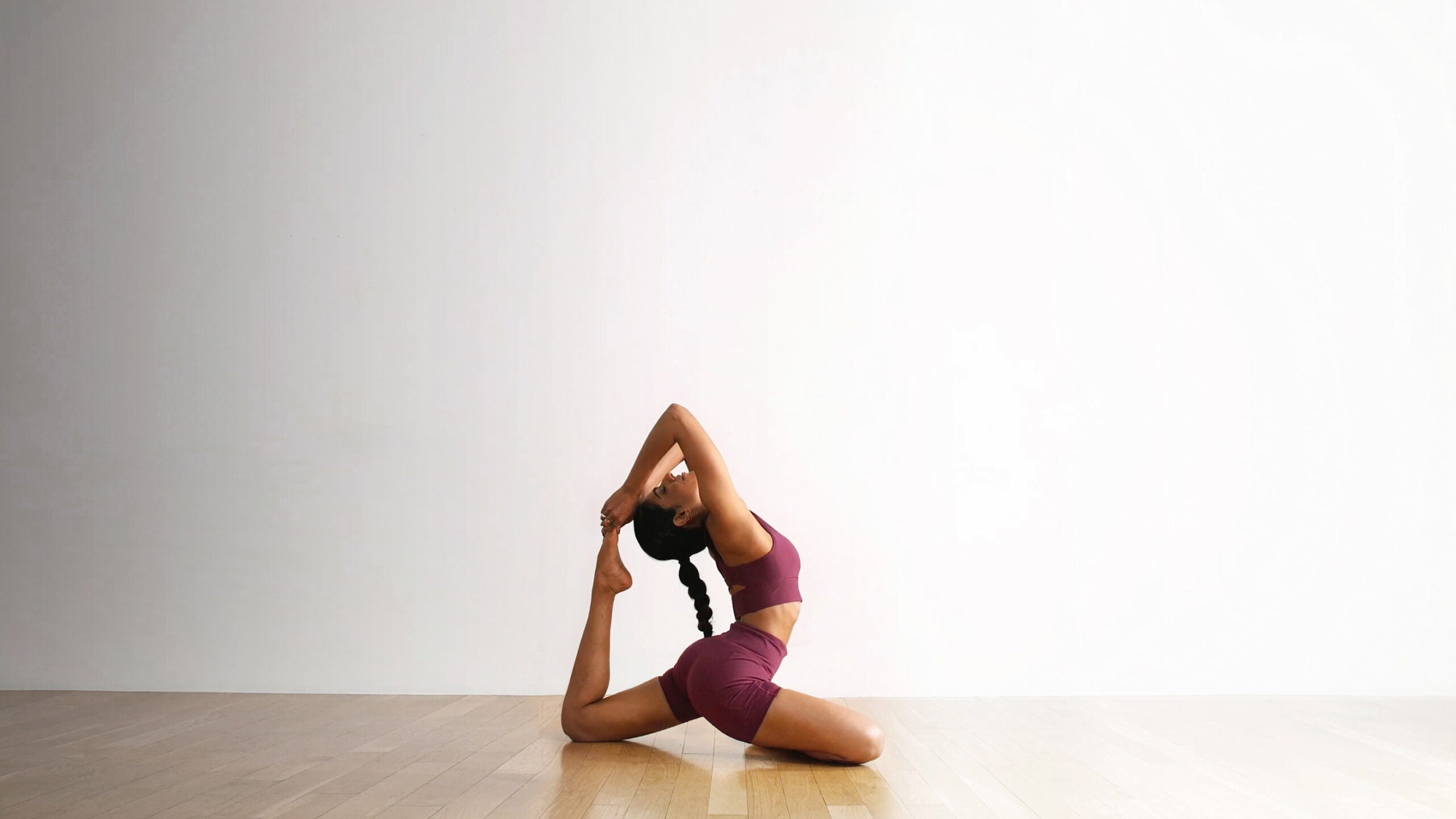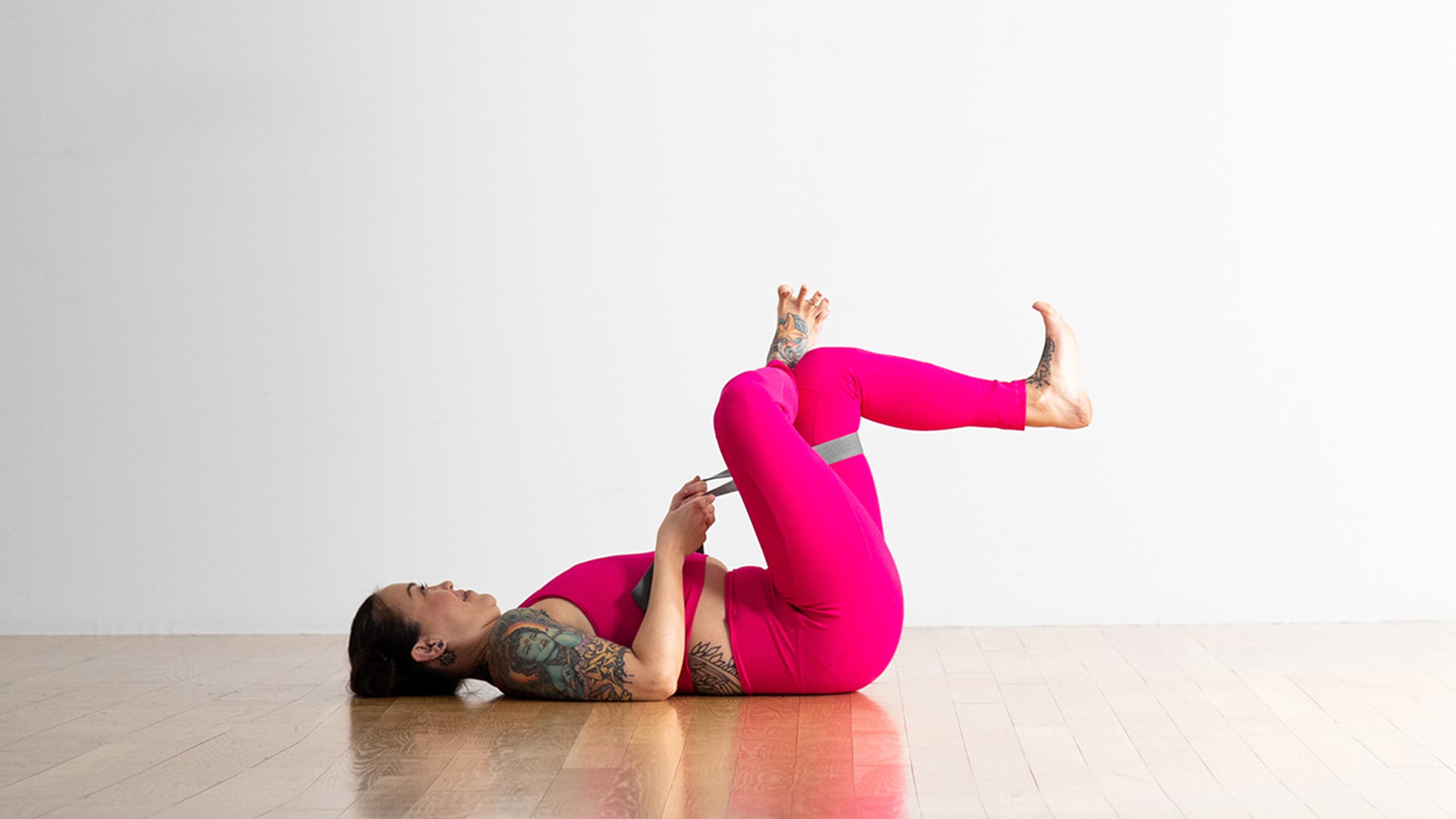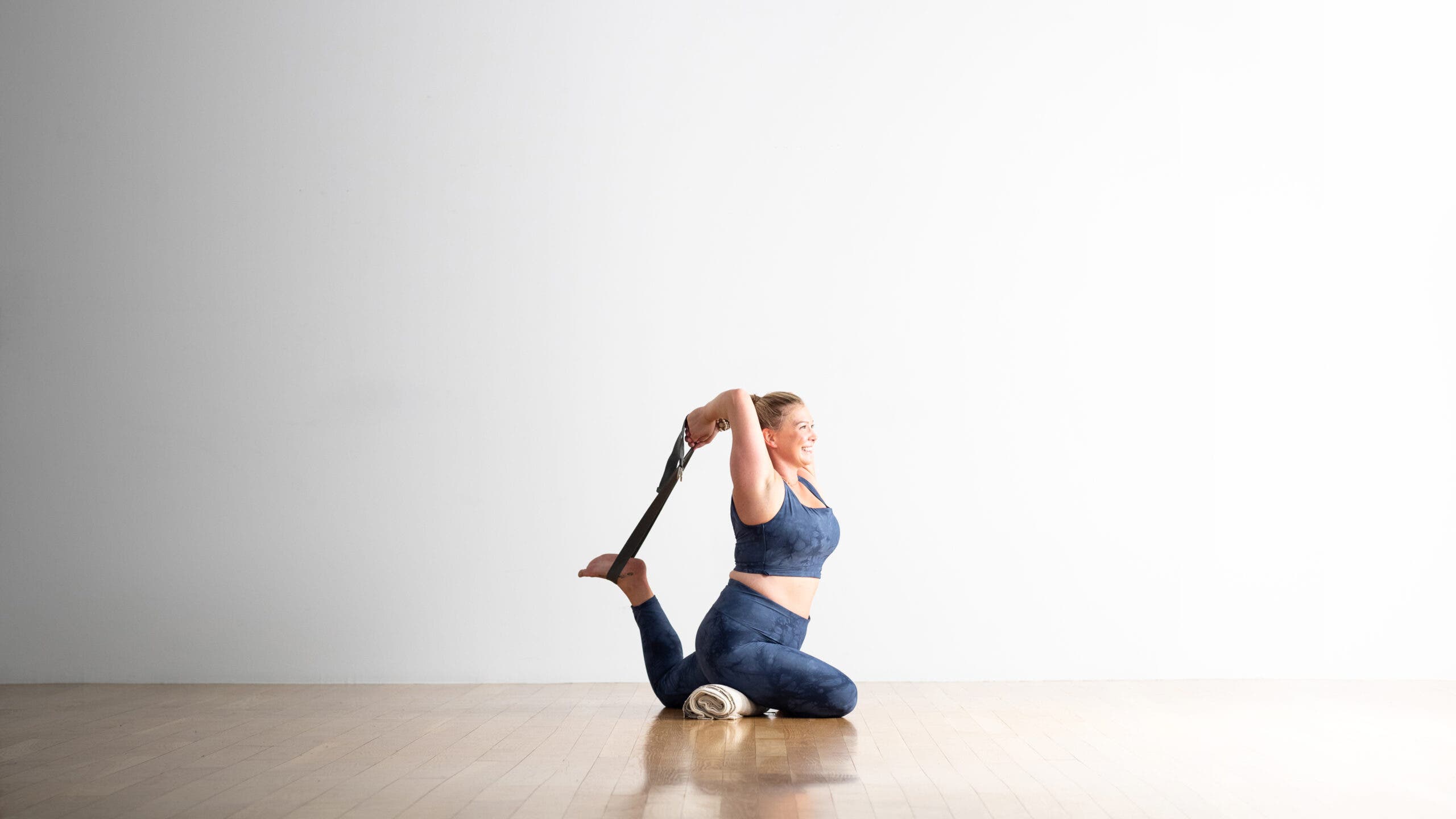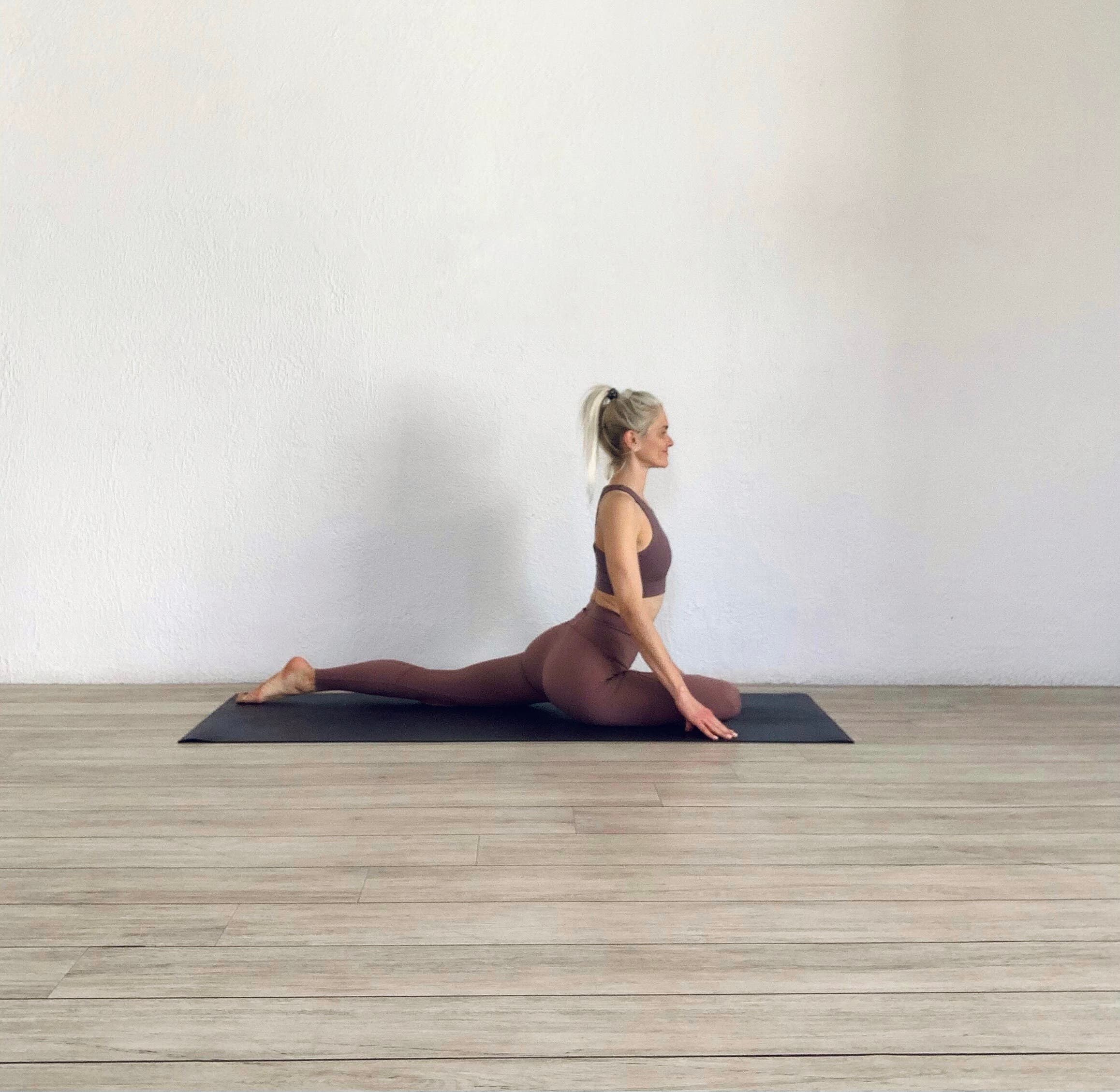One-Legged King Pigeon Pose II

(Photo: Andrew Clark. Clothing: Calia )
Eka Pada Rajakapotasana II (One-Legged King Pigeon Pose II) is a backbend and a front stretch that requires a combination of stability and mobility.
The pose is also a place to slow down. “This pose offers us a wonderful opportunity to experience the power of the pause,” says yoga teacher Carrie Owerko. “Deliberate pausing and breathing synchronizes the body, mind, and breath so that they dance together. This way, we can stop, readjust, and back off when there is either unsteadiness or too much resistance, ultimately moving toward the effortless effort described by Patanjali in the Yoga Sutra.”
Sanskrit
Eka Pada Rajakapotasana II (Aye-kah PAH-dah rah-jah-kah-poh-TAHS-ah-nah)
One-Legged King Pigeon Pose II: Step-by-step instructions
- Sit in Dandasana (Staff Pose). Bend your right knee and place your foot on the floor just in front of your right sitting bone so that your shin is approximately perpendicular to the floor.
- Shift slightly to the right and swing your left leg straight back behind your torso. Place your hands on the floor in front of you for support as you adjust your back leg so that your left leg is fully extended, with the front of the leg and top of the foot on the floor.
- Bend your left knee and raise the shin approximately perpendicular to the floor. Balance your weight on your right foot and left knee. To stabilize your position, push your right knee forward until it protrudes slightly beyond your toes.
- Inhale as you lift your right arm up and reach back. Exhale and take the left foot in your hand. Then do the same with your left arm. Holding the foot firmly, lift your chest and drop your head back toward the sole of your left foot. Keep your arms toward the midline of your body and your elbows reaching toward the ceiling.
- Hold for about 15 to 30 seconds, breathing as smoothly as possible.
- Exhale and release your foot, bringing the leg back to the floor. Repeat steps 1 through 4 on the opposite side.
Variations
Reclined King Pigeon with a strap

To approximate the hip stretch in One-Legge King Pigeon Pose, lie on your back with both feet on the floor near your hips and your knees pointing toward the ceiling. Wrap a strap around your left thigh and hold the ends in both hands. Cross your right angle over your left knee to make a figure-four shape. Lift your left foot off the floor, using the strap to pull your leg toward your torso until you feel a strong stretch in your hip.
King Pigeon with props

Come into the pose, but keep your back leg extended straight out behind you. Place a rolled or folded blanket, bolster, or pillow underneath your hip and thigh on the bent-knee side. Feel free to use as much cushioning as needed to keep your hips level. Reach back and loop a strap around your back foot. Bend your back knee, holding both ends of the strap to gently pull your heel toward your buttocks.
Upright King Pigeon Pose

Keep your back leg extended straight out behind you; don’t bend your back knee into the primary pose. Stay in position with your chest upright, supporting yourself with your fingertips. Adjust or get out of the pose if you feel pain in your knee or hip, or experience numbness or tingling.
One-Legged King Pigeon Pose II basics
Pose type: Backbend
Targets: Lower body
Pose benefits
This posture stretches the entire front of your body—your throat, chest and abdomen—as well as the deep hip flexors (psoas) and quads. As a backbend, it also strengthens your back muscles.
RELATED: 16 Cues for Pigeon Pose You Probably Haven’t Heard Before
Beginners’ tip
If you are new to the pose, practice using adjustments and props, such as attempting the pose with your back shin pressed against a wall. Breathing is key: be sure to inhale as you lift your arm up and, bending the elbow, exhale to take your foot. Then do the same with your other arm as you drop your head back toward the sole of your foot.
Why we love it
“For the longest time, I was scared of this pose—truly scared,” says Yoga Journal staff writer Ellen O’Brien. “I didn’t think it was in my wheelhouse. However, once I tried this pose with a strap, I absolutely loved it. This posture is a great chest opener and has the added bonus of opening my hips as well. It stretches my entire body.”
Teaching One-Legged King Pigeon Pose II
These cues will help protect your students from injury and help them have the best experience of the pose:
- Explore how you’re using your breath in this pose—you should be breathing without strain, steadily and regularly.
- Focus on stabilizing your hips by picturing the sides of your pelvis squeezing in toward your center.
- Lift your shoulder blades and try to rotate them slightly upward, being sure to support your neck as it extends backward.
Preparatory poses
Bhujangasana (Cobra Pose)
Low Lunge
Setu Bandha Sarvangasana (Bridge Pose)
Urdhva Mukha Svanasana (Upward-Facing Dog Pose)
Counter poses
Adho Mukha Svanasana (Downward-Facing Dog)
Balasana (Child’s Pose)
Paschimottanasana (Seated Forward Bend)